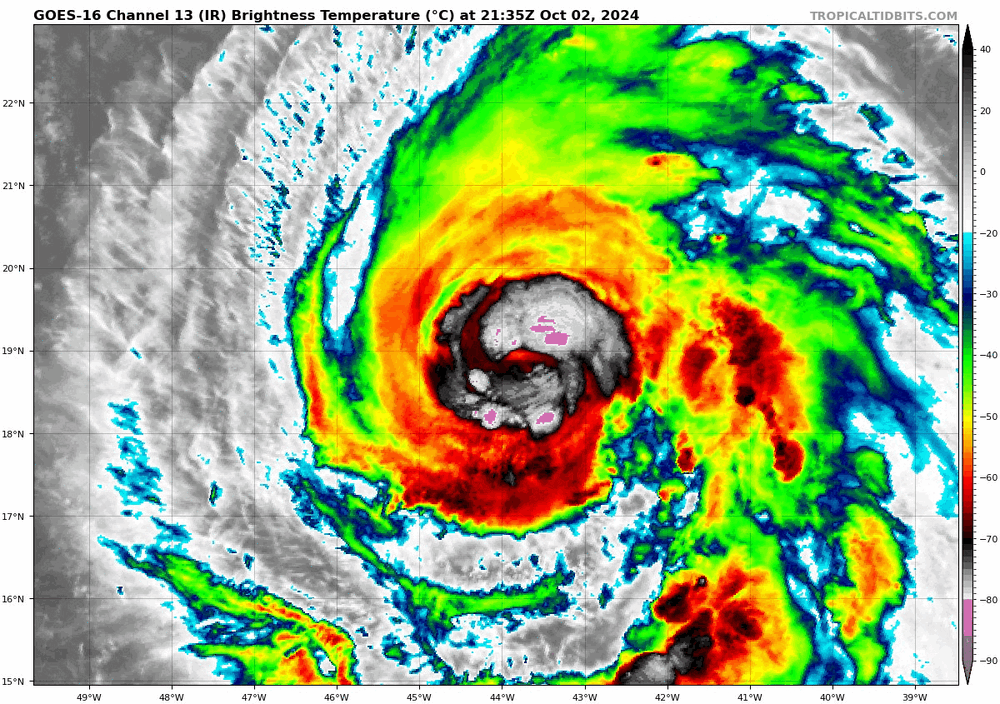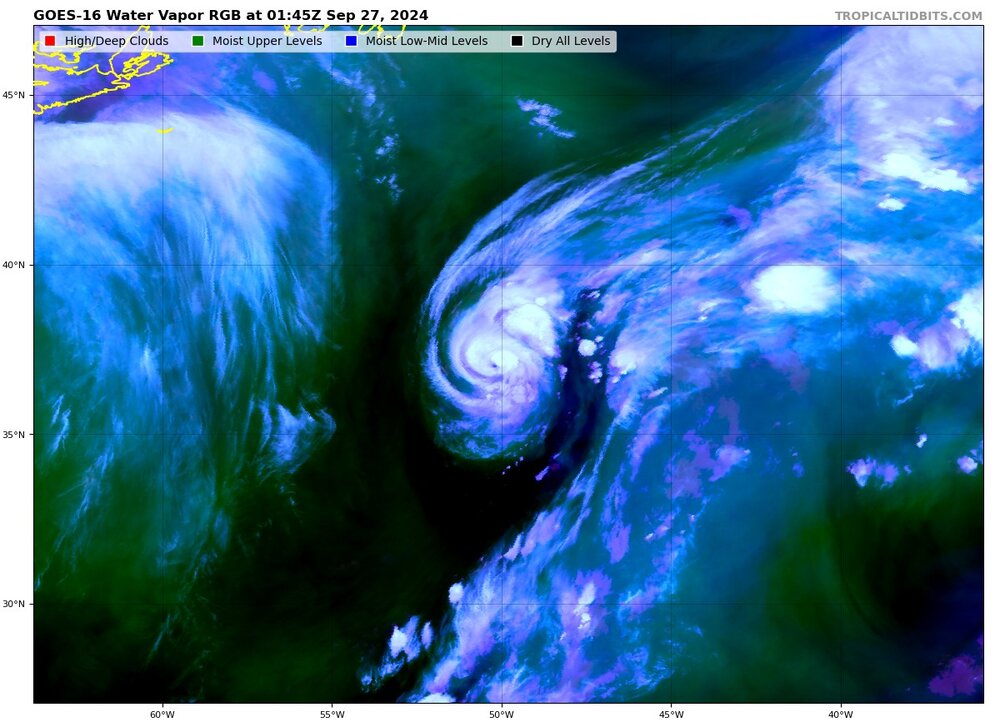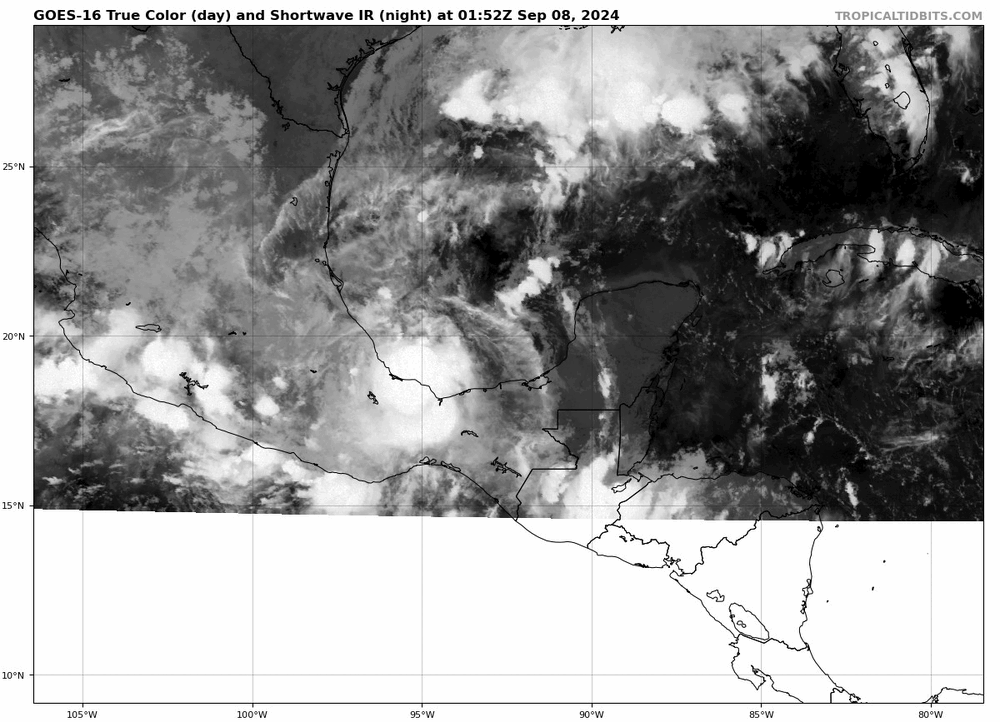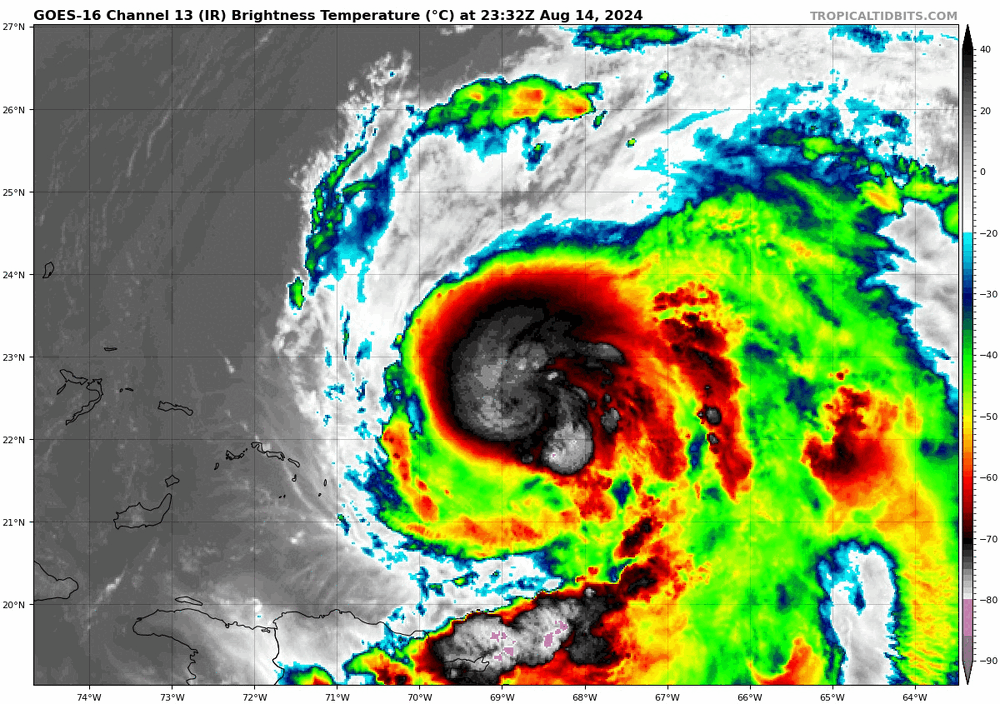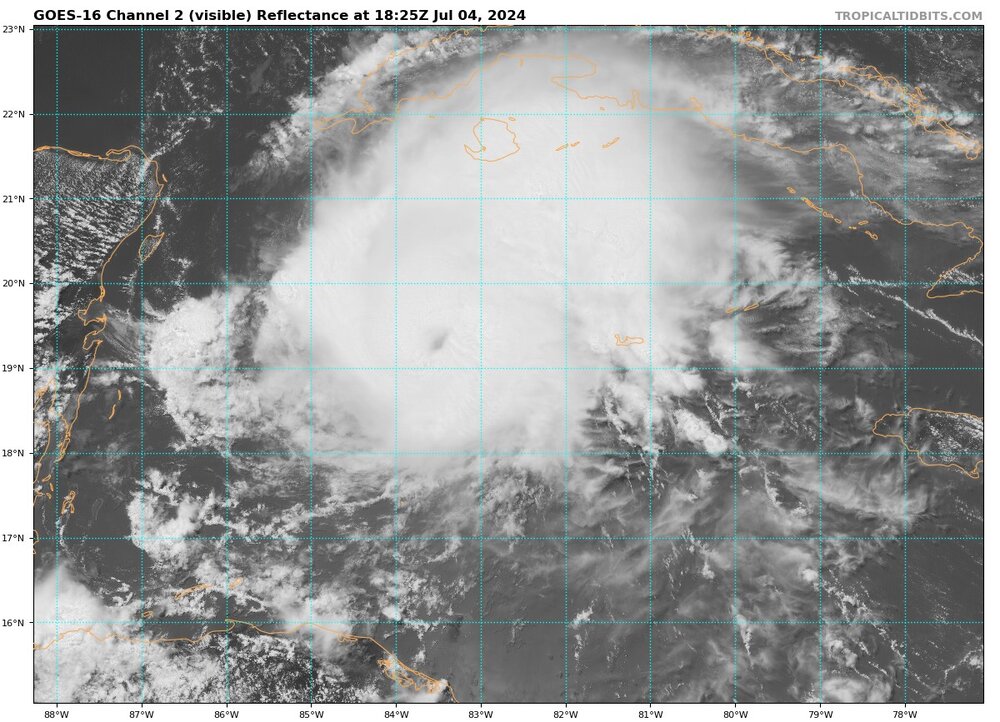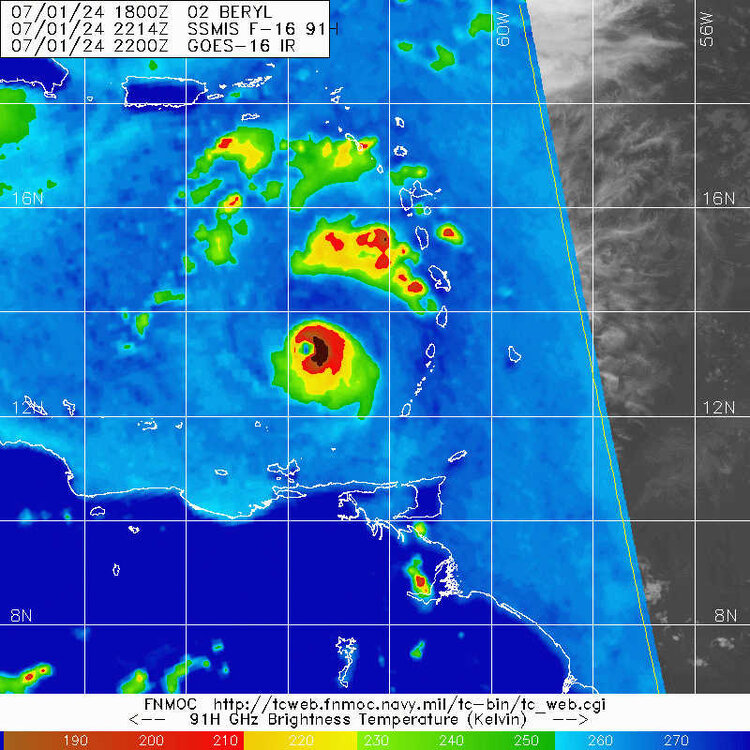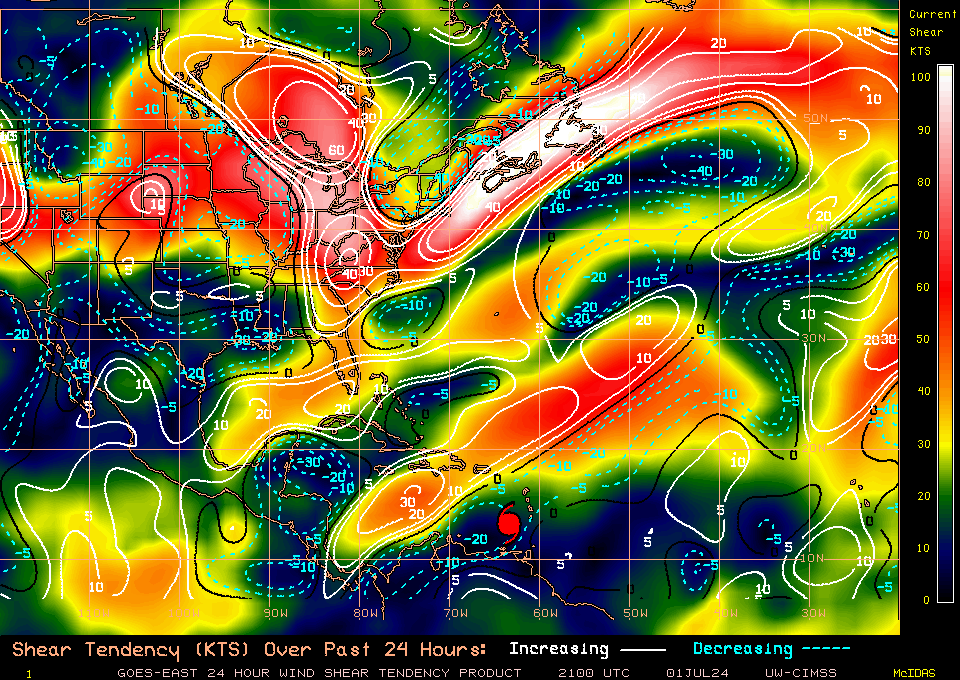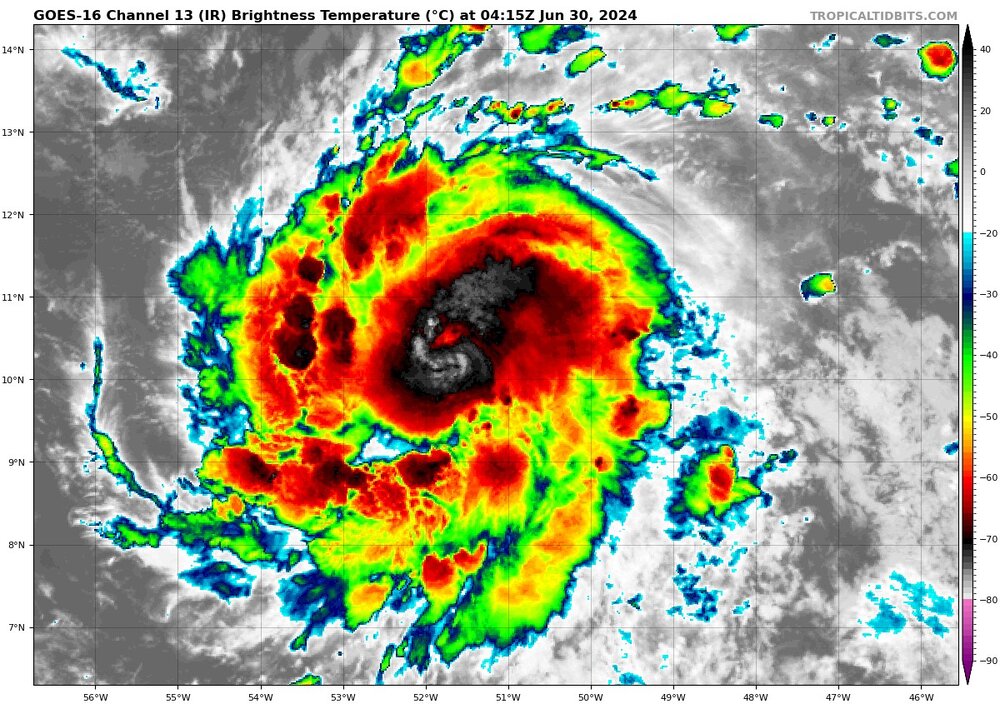-
Posts
669 -
Joined
-
Last visited
Content Type
Profiles
Blogs
Forums
American Weather
Media Demo
Store
Gallery
Everything posted by Boston Bulldog
-
NHC agrees, but take the under on daybreak! Kirk has already arrived as a MH!
-
-

2024 Atlantic Hurricane Season
Boston Bulldog replied to Stormchaserchuck1's topic in Tropical Headquarters
Isaac just popped an eye. Hurricane at 5am most likely. These mid-latitude systems always have great structure -
Eyewall is starting to look “bumpy” on radar. Plenty of mesovorts starting to emerge, Helene is really tightening up the core now
-
Notable improvement on IR. As a whole the core looks a lot more robust and less hollowed out than just a few hours ago…
-

Central & Eastern Pacific Thread
Boston Bulldog replied to Windspeed's topic in Tropical Headquarters
While John has dissipated, the rain has not. Very bad situation unfolding in Oaxaca and Guerrero states, regardless if Zombie John re-emerges like the NHC says it has a 50% chance of doing -
Data will often be noisy in a chaotic environment. This is why many different measurements are needed for official statistics. I would recommend saving yourself from eye strain from obsessing over each datapoint, and look at overall trends in pressure
-
Man this thing is a behemoth, look at that gigantic outer band draped over Jamaica. These CAG storms can bring quite the vorticity payload as they head north. Major rossby wave perturbations likely downstream as Helene rots in the mid-latitudes. I haven’t looked, but this would likely be a “reshuffle the deck” situation for the extratropical circulation across the N-ATL and Europe
-
Giving any serious consideration to Hurricane models before a center of circulation has formed is totally foolish. HAFS at 12z had this thing already vertically stacked by this time
-
That’s the eye
-
Fascinating and dynamic satellite view of the Western Gulf tonight. Look at that circulation around 27N start to accelerate south and get pulled closer to the wave axis
-
Powerful ET transitions are rare on radar and wow what a slug of moisture heading for the Avalon Peninsula. Interesting to see all the frontal features becoming more dominant in real time. Big time fronto-band fueled by deep tropical moisture heading for St John's. That's gonna pack a punch.
-
Quite the burst of convection that managed to rotate upshear and around the center. I would expect another burst on the eastern side of the center soon. You can see dry air getting ingested to the south via the northwesterly shear - it is trying to rotate into the center around 69W 22N. The inner structure of the core is a bit of a mystery right now due to the lack of new microwave passes, let's see if Ernesto can wall off the dry air
-
ACE is 304% of the mean to date. Take a deep breath. Current intensity is basically directly in line with forecasts from yesterday morning. Not every storm rapidly intensifies into a CAT-4 in 24 hours once reaching a “favorable” environment - not to mention there is dry air nearby as forecasted. Lots of fluff and emotional reactions today in this thread. Let’s figure it out people
-
Ernesto is absolutely flying West and needs to get out of this rapid easterly flow before it can organize quickly. Once it begins to lift north and exit the zonal flow, Ernesto should start taking advantage of its environment and anomalously warm waters and begin intensifying. SHIPS indices show a 46% chance of RI around hour 72 which gives additional credence to the near unaminous deepening we see from model outputs over the Sargasso Sea. Do I think 72 hours out is a bit out of the range for the SHIPS? Sure, especially since statistical models like it are not based in NWP methods, but they are a good indicator of what the environment may look like at that time. Seen a lot of Fiona thrown around here, idk I'm getting Gonzalo (2014) vibes from this. Perhaps a bit farther west than Gonzalo through the islands.
-
None of that shows a closed vortex at the low levels as I cannot see low level westerlies. There is some mid level spin present, but no indication of a TC at this time. Satellite imagery, especially IR satellite, can play tricks
-
Long ways to go people, once cyclogenesis occurs we can actually glean some insight into land interaction near the Caribbean. The long term prospects on this system are still a crapshoot. Only insight I can feel confident in is that generally next week doesn't have a synoptic pattern that screams quick recurve due to the possibility of a weak trough over the E US and weaker westerlies (given climatology). Of course these chess pieces are being modeled in fantasy land, ride with the ensembles for now. I think Webb had a great explanation on this.
-
Getting crushed in the Upper East Side. Big gust of wind accompanied its arrival
-
This isn't just a random warm spot in the central convection. This is the eye. Also note the eastward expansion of the CDO, indicating that easterly shear has abated. Wish we had new SSMIS microwave imagery, what a poor performance by those polar orbiting satellites today. Infrequent passes and several misses during critical moments of organization EDIT: Animation shows these CBs rotating around the eye moving upshear without a problem. IR satellite can often lead to the illusion of intensification, but the hallmarks of organization are all present. This storm looked pretty good last night, but it still wasn't totally stacked yet. This thing probably stacked about 18 hours afterward, definitely on the early end of my range
-
Agreed, it is necessary to keep a level head when discussing what climate change has the potential to do. There are many effects that climate change has demonstrated, and will continue to demonstrate on TCs. Frequency is NOT one of them. Across all corners of the field, research has discovered several concerning effects on rain rate, intensity, and rapid intensification, but TC frequency and landfall frequency conclusions remain either unclear or firmly outside the current state of the science. Apologies for banter outside of Beryl, though I think this is an important distinction. This topic is one that often muddies the waters, and if not properly communicated can lead to the many bright minds researching this field getting discredited by folks who take established research and run with it to places it was never intended to be.


